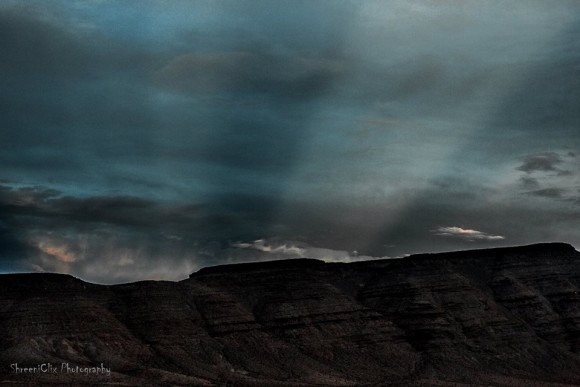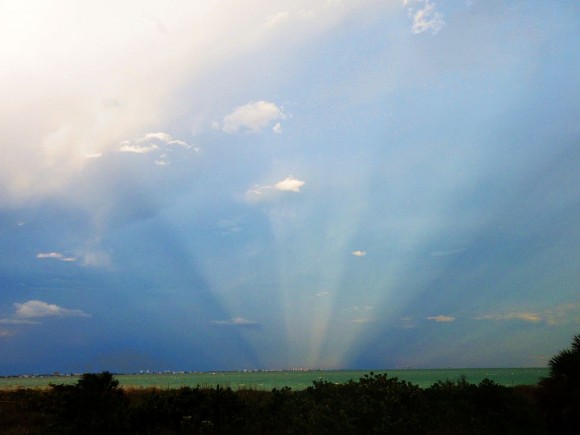
Anticrepuscular rays in the eastern Texas sky. Photo credit: Kenneth G. Smith
We’ve all seen crepuscular rays, or sunrays, converging on the sun. They appear as columns of sunlight, streaming up from the horizon or down through gaps in clouds. Next time you see them … turn around. Look opposite the direction of the sun. You might catch a glimpse of elusive anticrepuscular rays. These rays appear to converge towards the antisolar point – that is, the point on the sky opposite the sun. If you want to see them, remember these 3 tips:
1. Look in the direction opposite the sun, next time you see crepuscular rays extending from the horizon.
2. Look carefully. Remember that anticrepuscular rays are fainter and more elusive than crepuscular rays.
3. Watch around sunrise or sunset for anticrepuscular rays. That’s when they are are most frequently visible.

Jenney Disimon in Sabah, North Borneo caught these anticrepuscular rays and a rising moon – and posted them to EarthSky Facebook – on June 4, 2015.

Moonset on September 8, 2014. The sun is rising in the east, and these rays are seen in the west. Photo by Ted Schultz of Titusville, Florida.

Anticrepuscular rays seen in the east at sunset, in Bermuda, by EarthSky Facebook friend Le-ann Perry. Notice the rising moon. Also, look in the lower right of this photo, where you can see a bit of Earth’s shadow over the sea. Thanks, Le-Ann!

View larger. | Anticrepuscular rays – seen in the east at sunset – in Nevada. Shreenivasan Manievannan posted this photo on EarthSky Facebook in July 2014. Visit Shreeniclix Photography.

EarthSky Facebook friend Joe Randall in Colorado Springs caught these anticrepuscular rays in August, 2014.
Les Cowley of the great website Atmospheric Optics says:
Like crepuscular rays they are parallel shafts of sunlight from holes in the clouds and their apparently odd directions are a perspective effect. Think of a long straight road, it converges towards the horizon but turn around and it also converges to the opposite horizon. Crepuscular and anticrepuscular rays behave in the same way.
Anticrepuscular rays are not rare but they must be sought carefully. When ordinary crepuscular rays are visible, turn around and search for their opposite numbers.
See photo of crepuscular rays extending across the entire sky, at L...

Anticrepuscular rays over the Pacific, viewed from an aircraft. Photo by Geoffrey A. Landis, September 11, 2007, via Wikimedia Commons.

Anticrepuscular rays opposite the setting sun off the Florida Gulf Coast of the United States. Photo by Wojtow via Wikimedia Commons.
Bottom line: If you want to see anticrepuscular rays – columns of sunlight, often with dark shadowed areas in between the columns – look carefully opposite the direction of the sun. They are most often seen at sunrise or sunset.